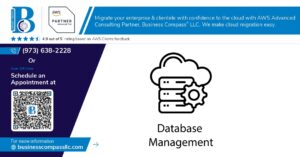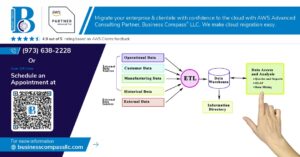Modern businesses can’t afford to rely on outdated cloud strategies when competitors are gaining speed with smart hybrid cloud strategy and multi-cloud deployment approaches. This guide is designed for IT leaders, cloud architects, and business executives who need practical frameworks to build resilient, cost-effective cloud infrastructure.
Many organizations jump into cloud migrations without proper planning, leading to security gaps, budget overruns, and performance issues. Smart cloud strategies require understanding your current environment, designing the right architecture mix, and establishing strong governance from day one.
We’ll walk through conducting a thorough cloud readiness assessment to identify what’s working and what needs fixing in your current setup. You’ll learn how to design multi-cloud deployments that actually improve performance rather than create complexity. Finally, we’ll cover proven cloud governance frameworks that keep your hybrid environment secure, compliant, and running smoothly as your business grows.
Understanding the Foundation of Cloud-Smart Architecture
Defining hybrid and multi-cloud environments for maximum flexibility
Hybrid cloud strategy combines on-premises infrastructure with public cloud services, creating seamless data and application portability across environments. Multi-cloud deployment leverages multiple public cloud providers simultaneously, preventing vendor lock-in while optimizing performance and cost. These cloud architecture approaches enable organizations to match specific workloads with ideal computing environments, maximizing both operational efficiency and strategic flexibility.
Key differences between traditional cloud adoption and strategic cloud deployment
Traditional cloud migration often involves simple lift-and-shift operations without architectural optimization. Strategic cloud deployment requires comprehensive planning, workload analysis, and cloud readiness assessment before implementation. Smart organizations redesign applications for cloud-native capabilities, implement proper cloud governance frameworks, and establish clear performance metrics. This methodical approach reduces long-term costs while ensuring scalability and security across all cloud environments.
Business drivers that demand sophisticated cloud strategies
Digital transformation initiatives push companies toward complex cloud architectures that support rapid scaling and innovation. Regulatory compliance requirements often mandate specific data residency and security controls that single-cloud solutions cannot address. Cost optimization pressures force organizations to balance performance with expenses across multiple providers. Customer demands for 24/7 availability and global reach make multi-cloud deployment essential for maintaining competitive advantages in modern markets.
Common misconceptions that lead to costly cloud mistakes
Many organizations assume cloud migration automatically reduces costs without proper planning and ongoing management. The belief that all applications benefit equally from cloud environments leads to inefficient resource allocation and poor performance. Companies often underestimate the complexity of cloud governance and multi-cloud best practices, resulting in security vulnerabilities and compliance failures. Another costly mistake involves neglecting staff training and change management during cloud implementation challenges.
Assessing Your Organization’s Cloud Readiness
Conducting comprehensive infrastructure and application audits
Start your cloud readiness assessment by mapping every piece of your current IT infrastructure. Document hardware specifications, software licenses, network configurations, and data flows across your organization. Create a detailed inventory that includes application dependencies, performance baselines, and integration points. This audit reveals which systems can move to the cloud easily and which ones need significant modifications before migration.
Identifying workloads best suited for different cloud environments
Different workloads thrive in different cloud environments based on their specific requirements. Web applications and development environments work well in public clouds due to their scalability needs. Mission-critical databases with strict compliance requirements often perform better in private clouds or on-premises systems. Batch processing jobs and backup storage are perfect candidates for hybrid cloud deployment. Consider factors like data sensitivity, performance requirements, regulatory compliance, and cost optimization when making these decisions.
Evaluating existing skills and determining training requirements
Your team’s current skill set directly impacts your cloud migration success. Assess your IT staff’s experience with cloud platforms, automation tools, and modern DevOps practices. Identify gaps in areas like cloud security, container orchestration, and infrastructure-as-code. Create a comprehensive training plan that includes hands-on labs, certification programs, and mentorship opportunities. Remember that successful hybrid cloud management requires both technical skills and strategic thinking about workload placement and resource optimization.
Establishing baseline performance metrics for future comparison
Before moving anything to the cloud, capture detailed performance metrics from your current environment. Record application response times, system availability, resource utilization rates, and user satisfaction scores. Document current costs including hardware depreciation, maintenance contracts, and operational expenses. Set up monitoring tools that can track the same metrics across hybrid and multi-cloud environments. These baselines become your reference points for measuring the success of your cloud strategy and justifying future investments in cloud infrastructure.
Designing Your Hybrid Cloud Strategy for Optimal Performance
Selecting the right mix of on-premises and cloud resources
Finding the perfect balance between on-premises infrastructure and cloud services starts with understanding your workload characteristics. Legacy applications requiring low latency often perform better on-premises, while variable workloads benefit from cloud elasticity. Consider data sovereignty requirements, compliance mandates, and performance needs when making these decisions. A successful hybrid cloud strategy maps each application to its optimal environment based on cost, performance, and regulatory factors.
Creating seamless data integration between environments
Data synchronization across hybrid environments requires robust integration tools and well-defined data governance policies. API gateways, message queues, and data virtualization platforms enable real-time data flow between on-premises systems and cloud services. Establish clear data lineage tracking and implement automated data quality checks to maintain consistency. Choose integration patterns like event-driven architecture or batch processing based on your specific latency and volume requirements for optimal performance.
Implementing robust security protocols across all platforms
Security in hybrid environments demands a unified approach that treats all platforms as part of one ecosystem. Deploy identity and access management systems that work seamlessly across environments, ensuring consistent authentication and authorization. Network segmentation, encryption in transit and at rest, and continuous monitoring create multiple security layers. Zero-trust architecture principles help maintain security posture regardless of where data and applications reside, reducing attack surfaces effectively.
Planning for scalability and future growth demands
Scalability planning in hybrid cloud architecture requires anticipating both capacity growth and technology evolution. Design your architecture with containerization and microservices to enable seamless scaling across environments. Implement auto-scaling policies that can leverage both on-premises and cloud resources based on demand patterns. Regular capacity planning reviews and performance benchmarking help identify bottlenecks before they impact operations, ensuring your hybrid cloud strategy adapts to changing business needs.
Building Effective Multi-Cloud Deployments
Choosing complementary cloud providers based on strengths
Different cloud providers excel in specific areas, making strategic selection critical for multi-cloud deployment success. AWS dominates in compute services and enterprise tools, while Google Cloud leads in machine learning and data analytics capabilities. Microsoft Azure integrates seamlessly with existing Windows environments and offers strong hybrid cloud management features. Smart organizations match workloads to provider strengths—running AI projects on Google Cloud, enterprise applications on Azure, and scalable web services on AWS.
Avoiding vendor lock-in while maximizing service benefits
Container orchestration platforms like Kubernetes provide abstraction layers that keep applications portable across cloud environments. Open-source tools and industry-standard APIs prevent dependency on proprietary services while still accessing advanced cloud-native features. Database choices require careful consideration—cloud-native solutions offer performance benefits but create migration barriers, while containerized databases maintain flexibility. Regular architecture reviews ensure you’re leveraging cloud-specific advantages without sacrificing future mobility options.
Managing complexity through standardized processes and tools
Multi-cloud environments demand consistent governance frameworks and unified management platforms. Infrastructure-as-code tools like Terraform enable standardized deployments across different providers using common templates and configurations. Centralized monitoring solutions provide visibility into performance metrics, security postures, and cost patterns across all cloud platforms. Automation pipelines should follow identical patterns regardless of the target cloud, reducing operational overhead and minimizing human error in complex deployments.
Optimizing costs across multiple cloud platforms
Cost optimization in multi-cloud best practices requires continuous monitoring and strategic workload placement. Reserved instances and committed use discounts vary significantly between providers, demanding careful analysis of usage patterns and long-term commitments. Automated cost management tools can shift workloads to the most economical platform based on real-time pricing and performance requirements. Regular cost audits identify opportunities for rightsizing resources and eliminating redundant services that accumulate across multiple cloud accounts.
Implementing Governance and Management Best Practices
Establishing centralized visibility across all cloud environments
Creating a unified dashboard that spans all your cloud platforms gives you the command center you need for effective hybrid cloud management. Modern cloud management platforms integrate with AWS, Azure, Google Cloud, and private infrastructure to provide real-time insights into resource usage, performance metrics, and security status. Teams can track workloads across environments without switching between multiple consoles, making it easier to spot issues before they impact operations. This centralized approach eliminates blind spots and ensures consistent monitoring standards across your entire cloud governance framework.
Creating consistent policies for security and compliance
Security policies must work seamlessly across hybrid and multi-cloud deployments to maintain regulatory compliance and protect sensitive data. Establishing identity and access management rules that translate across platforms ensures users get appropriate permissions regardless of which cloud they’re accessing. Compliance frameworks like SOC 2, HIPAA, or GDPR require consistent enforcement whether data lives in your private data center or public cloud instances. Cloud-native policy engines can automatically apply security controls and generate audit reports that span your entire infrastructure, simplifying compliance management while reducing risks.
Automating routine tasks to reduce operational overhead
Automation transforms cloud operations from reactive firefighting to proactive management by handling repetitive tasks without human intervention. Infrastructure as Code (IaC) tools like Terraform or AWS CloudFormation can provision resources consistently across multiple cloud providers using standardized templates. Automated scaling policies adjust capacity based on demand, while scheduled maintenance tasks handle updates, backups, and security patches during off-peak hours. Multi-cloud best practices include using orchestration platforms that can trigger workflows across different cloud environments, reducing manual errors and freeing up teams to focus on strategic initiatives.
Building disaster recovery and business continuity plans
Disaster recovery planning becomes more complex but also more resilient when you’re working with multiple cloud environments. Your strategy should leverage geographic diversity by replicating critical workloads across different cloud regions or providers to minimize single points of failure. Recovery time objectives (RTO) and recovery point objectives (RPO) guide decisions about backup frequency and failover automation. Testing disaster recovery procedures regularly ensures that your multi-cloud deployment can actually deliver on its promises when real incidents occur. Cloud-native backup services often provide cross-platform recovery options that simplify restoration processes.
Monitoring performance and costs in real-time
Real-time monitoring across hybrid and multi-cloud environments requires tools that can aggregate data from diverse sources into actionable insights. Cost management platforms track spending patterns across all cloud providers, identifying optimization opportunities like rightsizing instances or eliminating unused resources. Performance monitoring should include network latency between cloud environments, application response times, and resource utilization metrics that help teams make informed decisions about workload placement. Setting up automated alerts for both performance degradation and cost anomalies helps prevent small issues from becoming major problems while keeping cloud expenses under control.
Overcoming Common Implementation Challenges
Managing Cultural Resistance to Cloud Transformation
Organizational resistance often stems from fear of job displacement and unfamiliar technology. Success requires transparent communication about cloud benefits, involving skeptical team members in planning processes, and demonstrating quick wins. Leadership must champion the transformation while addressing concerns directly. Creating change champions across departments helps build momentum and reduces resistance through peer influence and success stories.
Addressing Skills Gaps and Talent Acquisition Needs
Cloud implementation challenges frequently center on insufficient technical expertise for hybrid cloud management and multi-cloud deployment. Organizations should invest in upskilling existing staff through cloud certification programs while recruiting specialists with proven cloud architecture experience. Building internal training programs and partnering with cloud vendors for knowledge transfer creates sustainable expertise. Cross-training teams on multiple cloud platforms ensures operational continuity.
Ensuring Reliable Connectivity and Network Performance
Network infrastructure forms the backbone of effective enterprise cloud solutions. Poor connectivity undermines hybrid cloud strategy benefits and creates performance bottlenecks. Organizations need redundant internet connections, optimized WAN configurations, and direct cloud provider connections. Regular network monitoring and performance testing identify potential issues before they impact operations. Software-defined networking solutions provide flexibility and improved traffic management across multi-cloud environments.
The path to cloud success isn’t about choosing between on-premises or cloud solutions—it’s about finding the right mix that works for your business. A well-planned hybrid and multi-cloud strategy gives you the flexibility to optimize costs, boost performance, and reduce risks while keeping your data and applications exactly where they need to be. When you take the time to assess your current setup, design with purpose, and put solid governance in place, you’re setting yourself up for long-term success.
Don’t let the complexity of multi-cloud environments scare you away from the benefits they offer. Start small, focus on one workload or application at a time, and build your expertise as you go. The challenges you’ll face along the way are totally manageable when you have clear processes and the right team in place. Your organization’s digital future depends on making smart choices about where and how you deploy your technology—and with the right strategy, you can turn the cloud into your biggest competitive advantage.



















